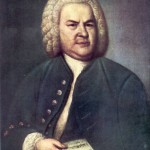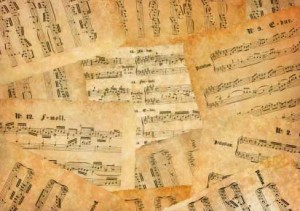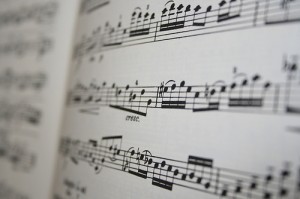Johann Sebastian Bach Bio
Johann Sebastian Bach
A Great Contributor Of Music Throughout the history of music, many great composers, theorists, and instrumentalists have left incdelible marks and influences that people today look
back on to admire and aspire to. No exception to this idiom is Johann Sebastian
Bach, whose impact on music was unforgettable to say the least. People today
look back to his writings and works to both learn and admire. He truly can be
considered a music history great.
Bach, who came from a family of over 53 musicians, was nothing short of a
virtuosic instrumentalist as well as a masterful composer. Born in Eisenach,
Germany, on March 21, 1685, he was the son of a masterful violinist, Johann
Ambrosius Bach, who taught his son the basic skills for string playing. Along
with this string playing, Bach began to play the organ which is the instrument he
would later on be noted for in history. His instruction on the organ came from
the player at Eisenach’s most important church. He instructed the young boy
rather rigorously until his skills surpassed anyone’s expectations for someone of
such a young age. Bach suffered early trauma when his parents died in 1695. He
went to go live with his older brother, Johann Christoph, who also was a
professional organist at Ohrdruf. He continued his younger brother’s education
on that instrument, as well as introducing him to the harpsichord. The rigorous
training on these instruments combined with Bach’s masterful skill paid off for
him at an early age. After several years of studying with his older brother, he
received a scholarship to study in Luneberg, Germany, which is located on the
northern tip of the country. As a result, he left his brother’s tutelage and went to
go and study there.
The teenage years brought Bach to several parts of Germany where he mainly
worked as an organist in churches, since that was the skill he had perfected the
best from his young training. However, a master of several instruments while
still in his teens, Johann Sebastian first found employment at the age of 18 as a
violinist in a court orchestra in Weimar. Although he did not remain there
terribly long, he was able to make good money playing for the king. He soon
after accepted a position as a church organist in Arnstadt. It was here that Bach
would soon realize his high standards and regards that he had for music. In
Arnstadt as well as in many other places that Bach worked he was notorious for
getting into fights over the quality of music that was being produced. A perfect
example of this can be seen in Arnstadt. Previous accounts of history claim that
Bach was upset with the performance of the church choir for which he played
for. He claimed that “the voices could never make the music soar to the sky as it
should” (loosely translated). Here Bach realized the high level of music and
perfectionism that he wanted. In 1707, at the age of 22, Bach moved on from
Arnstadt to another organist job, this time at the St. Blasius Church in
Muhlhausen. Once again he did not remain there too long, only a little over a
year, when he moved again to Weimar where he accepted the position of head
concertmaster and organist in the Ducal Chapel. It was here that Bach settled
himself and began to compose the first collection of his finest early works
which, included organ pieces and cantatas.
By this time Bach had been married for several years. He actually became
married to his cousin Maria Barbara. They, for the most part, had a happy
marriage. He was happy. By this stage of his life he had “composed” for himself
a wonderful reputation of being a brilliant musical talent. Along with that his
proficiency on the organ was unequaled in Europe by this time. In fact, he
toured regularly as a solo virtuoso, and his growing mastery of compositional
forms, like the fugue and the canon, were already attracting interest from the
musical establishment, which, in his day, was the Lutheran church. The church
began to look at Bach’s writings and saw the opportunity to possibly use his
music in their masses. Thus was the slow birth of the German chorale, which
Bach later became renowned for. Bach’s virtuosic career did suffer minor
setbacks along the way. He occasionally would be passed over for deserved
positions within the court that he worked. However, in 1715 when he did not
receive a truly desired position of “Kapellmeister” (choral master) of Weimer, he
was insulted and left the city. He accepted a position as a court conductor in
Cothen, where he began to work on another part of his musical genre, that of
instrumental music. Up until this point, Bach was mainly writing organ pieces
and church cantatas. One of his most famous, “Wachet auf ruft uns die Stimme,”
became well known around the world and is still looked upon as a classic today.
However, when he arrived in Cothen he began to focus on all other instruments
and used his talents as a string player and knowledge of “wind & brass”
instruments to begin composing instrumental pieces. It was during his stay here
in Cothen that the orchestral masterpiece known as the “Brandenburg Concerto”
was born.
Bach’s tenure in Cothen lasted approximately seven years. In that time his wife
Mara became ill and died. Although distraught, he soon remarried to Anna
Magdalena. It was during this time that Bach had several children, three in
particular would grow to become talented musicians like their father. Wilhelm
Friedmann, C.P.E. Bach, and J.C. Bach. They to became virtosos of the organ
and later the harpsichord, much like their father was. After Bach left Cothen, he
received a prestigious position as music director at the St. Thomas Church in
Leipzig, Germany. Here Bach accepted his most demanding position of all. He
had the responsibility of composing cantatas for the St. Thomas and St. Nicholas
churches, conducing the choirs, overseeing the musical activities of numerous
municipal churches, and teaching Latin in the St. Thomas choir school.
Although demanding, Bach persisted and succeeded in Leipzig and continued to
write music of various kinds with a level of craft and emotional profundity that
was his alone. Bach remained at his post in Leipzig until his death in 1750.
Although he was blinded by cataract problems in the early 1740s, he still
managed to compose masterful pieces up until days before his death. His last
musical composition that he crafted happened to be a choral prelude, which was
dedicated to his son-in law. To this day more than 1,000 of Bach’s accomplished
compositions survive. Some of his most famous works include the
“Brandenburg Concerto,” The “Mass In B Minor,” “The Goldberg Variations for
Harpsichord,” his vast amount of toccatas, especially his “Toccata In F Major,”
his collection of variations on organ preludes captured in the “Well Tempered
Clavier,” his immense amount of fugues and chorales including his “Fugue in G
minor,” major as well as his tremendous amount of chorales, and his Christmas
and Easter oratorios, which was another schism in his music genre. Quite
frankly, the list goes on and on and on. Surely, Johann Sebastian Bach never
believed that his success would become so heroic and monumental. However,
we today perceive him to be one of the key individuals to shape the music we
listen to. It is no secret that his writings, especially chorale writings, are used to
illustrate the principles of our functional system of harmony. It is in this example
alone that it can be seen that Bach’s works have not only survived to the point
where they are still heard and listened to, but they also still provide us with
knowledge and understanding from which we can learn and discover music. It is
for these reasons that the life of Johann Sebastian Bach was truly a great one and
it is without any apprehension that he can be considered a musical great.



